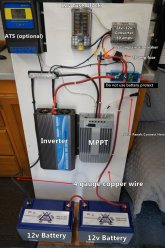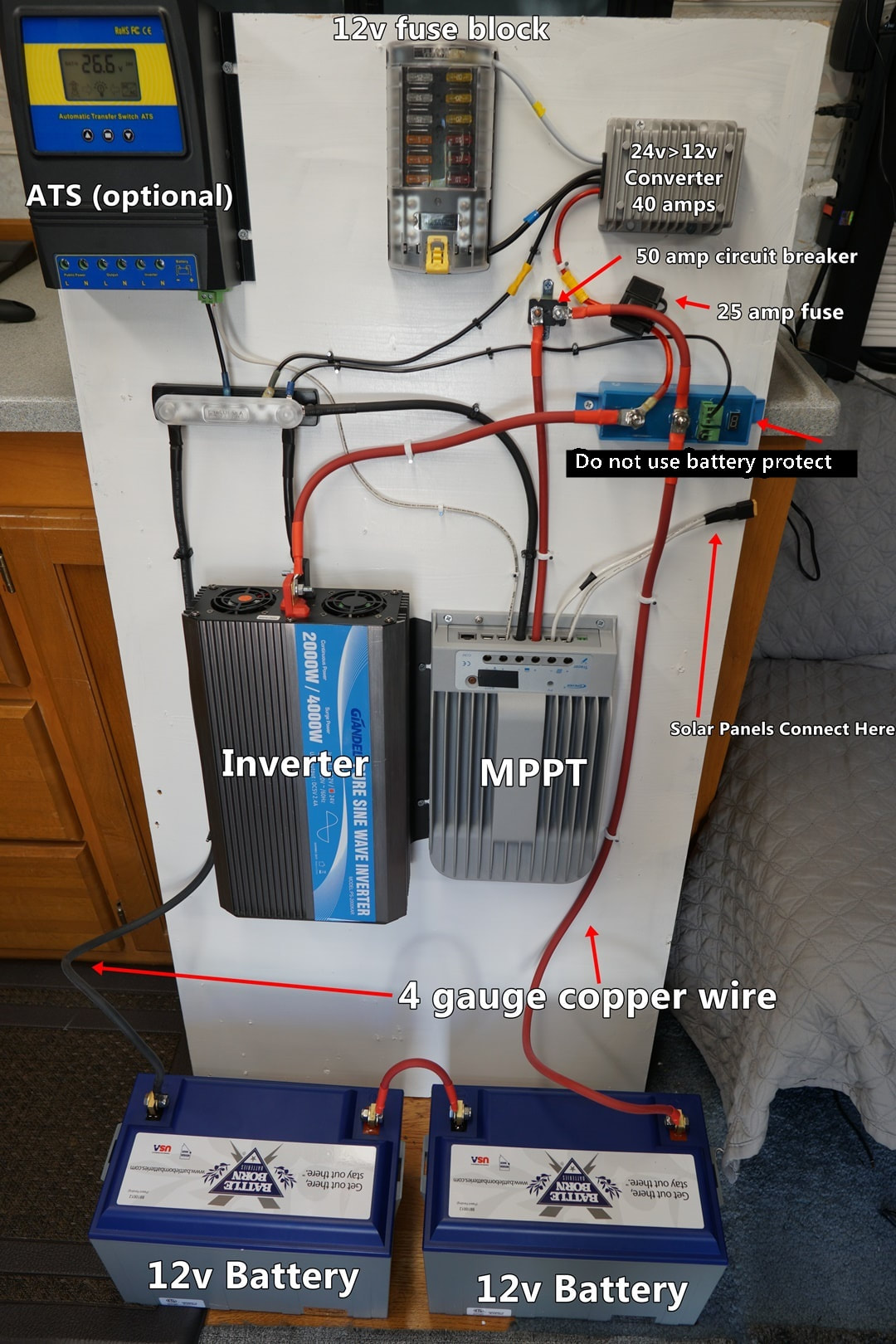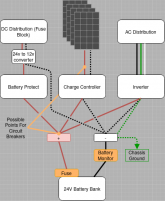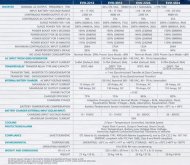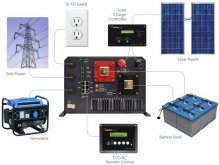Hello Folks,
I'm trying to buy parts for and build a 2000w, 24v solar-powered system. I'm a newbie.
On Will Prowse's website here: https://www.mobile-solarpower.com/2000-watt-24v-solar-system.html, under the picture (attached) he states that, "Due to a recent change by Victron, the battery protect is not recommended for this system. Just connect everything to a bus bar or surface mount terminal."
He calls it the battery protect but it does not look like the blue item in his video here:
.
My question is what would picture revised without the blue battery protect look like?
Is this the battery protect mentioned in the video: https://www.amazon.com/gp/product/B079ZL6WPD/ref=ox_sc_act_title_23?smid=A2TN19FHI2Z5KL&th=1
Also, he mentions using 4 gauge wire for battery to inverter. Should I use 4 or 2 gauge? Thank you for any assistance.
I'm trying to buy parts for and build a 2000w, 24v solar-powered system. I'm a newbie.
On Will Prowse's website here: https://www.mobile-solarpower.com/2000-watt-24v-solar-system.html, under the picture (attached) he states that, "Due to a recent change by Victron, the battery protect is not recommended for this system. Just connect everything to a bus bar or surface mount terminal."
He calls it the battery protect but it does not look like the blue item in his video here:
My question is what would picture revised without the blue battery protect look like?
Is this the battery protect mentioned in the video: https://www.amazon.com/gp/product/B079ZL6WPD/ref=ox_sc_act_title_23?smid=A2TN19FHI2Z5KL&th=1
Also, he mentions using 4 gauge wire for battery to inverter. Should I use 4 or 2 gauge? Thank you for any assistance.



